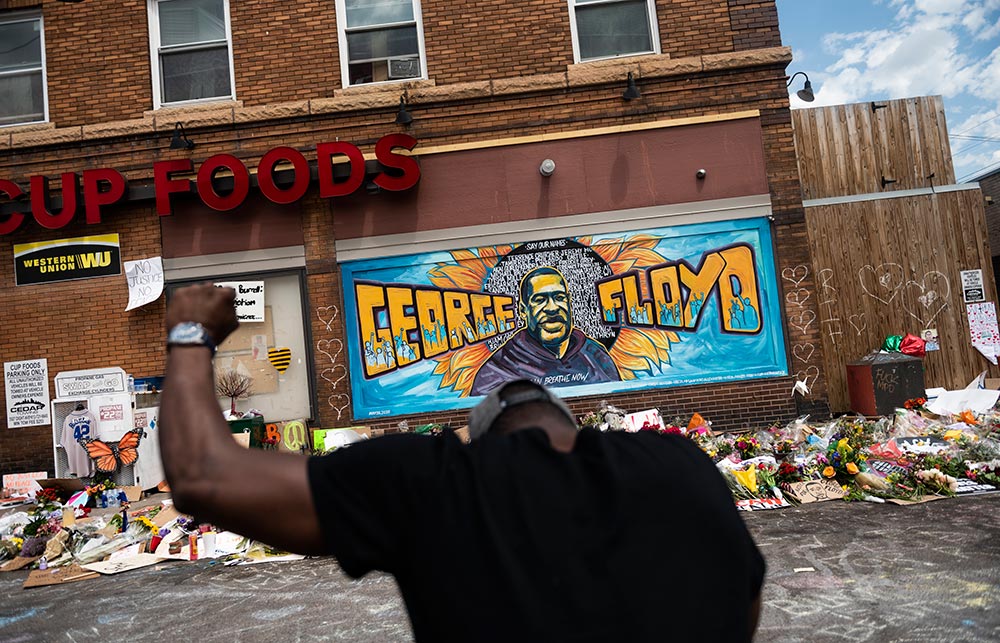
美股三大股指周二悉数上涨。截至收盘,道指涨267.63点,报25742.65点,涨幅为1.05%;纳指涨56.32点,报9608.37点,涨幅为0.59%;标普500指数涨25.09点,报3080.82点,涨幅为0.82%。
本周末,在乔治•弗洛伊德因明尼阿波利斯警察暴力执法死亡之后,美国多个城市爆发抗议活动,导致社会动荡加剧。尽管如此,投资者基本上没有受到大规模抗议活动的影响,相反,他们对经济复苏持乐观的态度。
金融咨询公司爱德华•琼斯(Edward Jones)的奈拉•理查德森表示:“市场能够坦然面对政治局面的变化,以及全国刚刚解除封锁之后的经济状况。其中一个原因是,市场是有前瞻性的,市场不会只关注当前的状况。”
美股市场延续了上周的上涨趋势,因为许多州的缓慢重启和略有升高的制造业数据,让投资者感到乐观。供应管理协会(Institute for Supply Management,ISM)周一公布的5月份制造业指数从4月份的41.5提高到43.1,结束了连续4个月萎缩。另外,虽然吉利德科学(Gilead Sciences)等公司的抗病毒药物测试结果令人失望,但礼来(Eli Lilly)宣布其新型冠状病毒抗体产品已经开始人体试验。
从大规模失业到弗洛伊德和其他非洲裔美国人遭警察致死在全国引发的公愤,这些可怕的消息似乎并没有对股市产生影响。市场观察家们可能依旧无法理解出现这种情况的原因。
爱德华•琼斯的理查德森认为,市场一直关注的是美联储和联邦政府提供的前所未有的财政响应和支持措施,“而不是国家近期的挑战,比如失业率激增和第二季度GDP下滑等经济挑战,以及在大选年国内出现的分裂和两极化反应等政治挑战。”
历史影响
投资研究公司New Constructs的CEO戴维•特雷纳在周一发布的一篇报告中表示,历史上,“社会动荡问题对股市的长期影响微乎其微。”
以前发生社会动荡和抗议活动时,市场基本上不会受到混乱事件的干扰。1968年马丁•路德•金遇刺之后,在他去世当天股市曾短暂下行,从4月4日到4月5日下跌了0.5%,但截至4月11日股市却上涨了约3.5%。1992年,殴打摩托车手罗德尼•金的警察被无罪释放引发骚乱,同样没有扰乱股市行情。从4月29日爆发骚乱至5月1日,标普500指数的走势一直相对稳定,从4月29日至5月4日上涨了1.2%左右。2014年,密苏里州弗格森因迈克尔•布朗被警察射杀引发骚乱,8月9日抗议活动开始后,从周一至周二股市仅下跌了0.16%,8月11日至8月21日股市上涨了2.86%。
事实上,策略师和分析师认为,股市与可怕的现实和时事往往是脱节的。即使在1968年,股市全年的涨幅仍超过了7%。咨询公司Fundstrat Global Advisors的研究负责人汤姆•李写道:“1968年发生了许多骚乱和暴力事件,是‘美国破碎’的一年。尽管如此,股市的表现依旧稳健。1968年提醒投资者,股市和全球事件并不总是紧密相连的。”
第二轮疫情和失业情况
虽然全国抗议活动对股市和消费者信心的影响仍有待观察,但本周,投资者还要面临其他不利因素。
理查德森等分析师认为,在经济复苏过程中“已经确定的超级大反派”就是爆发第二轮新冠疫情的可能性。随着经济重启,感染人数大幅增加的威胁成为人们最关注的问题。
加拿大皇家银行资本市场(RBC Capital Markets)美国股票策略负责人洛里•卡瓦西纳在周一发布的报告中表示,有人担心“大型集会可能加剧人们对爆发第二轮新冠疫情的担忧。这种担忧可能妨碍经济重启,或者让人们复工时非常谨慎。”
理查德森认为“无论是因为一群人开泳池派对,还是大规模抗议这种极端事件,导致爆发第二轮疫情都令人担忧……抗议事件涉及的人群非常广泛。”
虽然最近几周可怕的失业数据基本上没有干扰到股市,但理查德森将关注周四发布的失业救济金申领人数,希望从中找出表明很多失业情况只是临时性的迹象。她说:“我想如果情况有所变化,会对市场产生影响。”(财富中文网)
翻译:刘进龙
审校:汪皓
美股三大股指周二悉数上涨。截至收盘,道指涨267.63点,报25742.65点,涨幅为1.05%;纳指涨56.32点,报9608.37点,涨幅为0.59%;标普500指数涨25.09点,报3080.82点,涨幅为0.82%。
本周末,在乔治•弗洛伊德因明尼阿波利斯警察暴力执法死亡之后,美国多个城市爆发抗议活动,导致社会动荡加剧。尽管如此,投资者基本上没有受到大规模抗议活动的影响,相反,他们对经济复苏持乐观的态度。
金融咨询公司爱德华•琼斯(Edward Jones)的奈拉•理查德森表示:“市场能够坦然面对政治局面的变化,以及全国刚刚解除封锁之后的经济状况。其中一个原因是,市场是有前瞻性的,市场不会只关注当前的状况。”
美股市场延续了上周的上涨趋势,因为许多州的缓慢重启和略有升高的制造业数据,让投资者感到乐观。供应管理协会(Institute for Supply Management,ISM)周一公布的5月份制造业指数从4月份的41.5提高到43.1,结束了连续4个月萎缩。另外,虽然吉利德科学(Gilead Sciences)等公司的抗病毒药物测试结果令人失望,但礼来(Eli Lilly)宣布其新型冠状病毒抗体产品已经开始人体试验。
从大规模失业到弗洛伊德和其他非洲裔美国人遭警察致死在全国引发的公愤,这些可怕的消息似乎并没有对股市产生影响。市场观察家们可能依旧无法理解出现这种情况的原因。
爱德华•琼斯的理查德森认为,市场一直关注的是美联储和联邦政府提供的前所未有的财政响应和支持措施,“而不是国家近期的挑战,比如失业率激增和第二季度GDP下滑等经济挑战,以及在大选年国内出现的分裂和两极化反应等政治挑战。”
历史影响
投资研究公司New Constructs的CEO戴维•特雷纳在周一发布的一篇报告中表示,历史上,“社会动荡问题对股市的长期影响微乎其微。”
以前发生社会动荡和抗议活动时,市场基本上不会受到混乱事件的干扰。1968年马丁•路德•金遇刺之后,在他去世当天股市曾短暂下行,从4月4日到4月5日下跌了0.5%,但截至4月11日股市却上涨了约3.5%。1992年,殴打摩托车手罗德尼•金的警察被无罪释放引发骚乱,同样没有扰乱股市行情。从4月29日爆发骚乱至5月1日,标普500指数的走势一直相对稳定,从4月29日至5月4日上涨了1.2%左右。2014年,密苏里州弗格森因迈克尔•布朗被警察射杀引发骚乱,8月9日抗议活动开始后,从周一至周二股市仅下跌了0.16%,8月11日至8月21日股市上涨了2.86%。
事实上,策略师和分析师认为,股市与可怕的现实和时事往往是脱节的。即使在1968年,股市全年的涨幅仍超过了7%。咨询公司Fundstrat Global Advisors的研究负责人汤姆•李写道:“1968年发生了许多骚乱和暴力事件,是‘美国破碎’的一年。尽管如此,股市的表现依旧稳健。1968年提醒投资者,股市和全球事件并不总是紧密相连的。”
第二轮疫情和失业情况
虽然全国抗议活动对股市和消费者信心的影响仍有待观察,但本周,投资者还要面临其他不利因素。
理查德森等分析师认为,在经济复苏过程中“已经确定的超级大反派”就是爆发第二轮新冠疫情的可能性。随着经济重启,感染人数大幅增加的威胁成为人们最关注的问题。
加拿大皇家银行资本市场(RBC Capital Markets)美国股票策略负责人洛里•卡瓦西纳在周一发布的报告中表示,有人担心“大型集会可能加剧人们对爆发第二轮新冠疫情的担忧。这种担忧可能妨碍经济重启,或者让人们复工时非常谨慎。”
理查德森认为“无论是因为一群人开泳池派对,还是大规模抗议这种极端事件,导致爆发第二轮疫情都令人担忧……抗议事件涉及的人群非常广泛。”
虽然最近几周可怕的失业数据基本上没有干扰到股市,但理查德森将关注周四发布的失业救济金申领人数,希望从中找出表明很多失业情况只是临时性的迹象。她说:“我想如果情况有所变化,会对市场产生影响。”(财富中文网)
翻译:刘进龙
审校:汪皓
Markets closed higher on Monday, as investors largely ignored widespread protests over the weekend and looked instead to optimism over the economy beginning to recover.
Despite increasing civil unrest this weekend due to protests in cities all across America following the killing of George Floyd by police in Minneapolis, the S&P 500 rose roughly 0.4% and the Dow followed suit on the first day of June.
"The markets are taking in stride a lot of concerning political developments and an economy that is just emerging from a nationwide lockdown," says Edward Jones' Nela Richardson. "One of the reasons is that markets are forward-looking, so they’re not just looking at present circumstances."
Markets continued gains from last week, as investors watch for optimism around the slow reopening of many states and marginally higher manufacturing numbers. The Institute for Supply Management's May manufacturing index rose to 43.1 from 41.5 in April, up from a four-month decline, the ISM reported on Monday. Eli Lilly also reported starting a human trial for its coronavirus antibody treatment amid a backdrop of disappointing virus drug testing results from those including Gilead Sciences.
Yet market observers may be scratching their heads at why markets have seemed to brush off much of the horrible headlines in recent weeks—from massive unemployment numbers to nationwide outrage over the death of Floyd and other African-Americans at the hands of police.
Edward Jones' Richardson suggests the market has consistently looked to the unprecedented fiscal response and support from the Fed and the federal government, "rather than the near-term challenges that the country is facing, both economically when it comes to the job losses, the drop in 2nd quarter GDP, and politically—the fact that we are seeing such a divisive and polarized reaction nationally in an election year," she notes.
Historical impact
Historically, "social unrest issues have very little long-term impact on markets," David Trainer, CEO of investment research firm New Constructs, said in a note Monday.
During previous periods of civil unrest and protests, markets similarly largely ignored tumultuous events. After the assassination of Martin Luther King Jr. in 1968, markets dipped briefly on the day of his death, down 0.5% from April 4 to April 5, but rose roughly 3.5% by April 11, 1968. Similarly, the riots following the acquittal of police officers who had beaten motorist Rodney King in 1992 didn't disrupt markets too dramatically, as the S&P 500 remained relatively flat from the beginning of riots on April 29 to May 1, and rose some 1.2% from April 29 through May 4, 1992. In 2014, the riots in Ferguson, Mo., triggered by the fatal shooting of Michael Brown by police, prompted markets to fall only 0.16% on the Monday through Tuesday following the start of protests on August 9, and saw markets gain 2.86% from August 11 through August 21, 2014.
In fact, strategists and analysts suggest markets often disconnect from horrible realities and headlines. Even in 1968, markets finished the year up over 7%. "1968 was the year that 'shattered America' and many tumultuous events and violence took place in that year. And despite that, the equity markets managed to perform solidly," Tom Lee, head of research at Fundstrat Global Advisors, wrote. "1968 is a reminder that stocks and world events are not always connected."
Second wave and unemployment
While the impact of nation-wide protests on markets and consumer sentiment may remain to be seen, investors are grappling with several other headwinds this week.
According to those like Richardson, "the identified, big bad villain" in the recovery is the potential for a second wave of the coronavirus—and as the economy begins to reopen, the threat of spiking infections is a top concern.
Some voiced worries that "mass gatherings could spark concerns about a second wave of the virus," Lori Calvasina, head of U.S. equity strategy at RBC Capital Markets, said in a note Monday. "Second wave fears could halt reopening or keep behavior cautious."
Richardson suggests that "whether that second wave comes from a bunch of people having a pool party or something more extreme to watch, which is mass protests, ... the full spectrum of that civil engagement … is a concern," she says.
And while markets have largely brushed off abysmal unemployment numbers in recent weeks, Richardson for one will be watching jobless claims on Thursday, and looking for signs that much of the job losses are temporary. "If there’s a change in that narrative, I think that would have an effect on the markets," she says.






